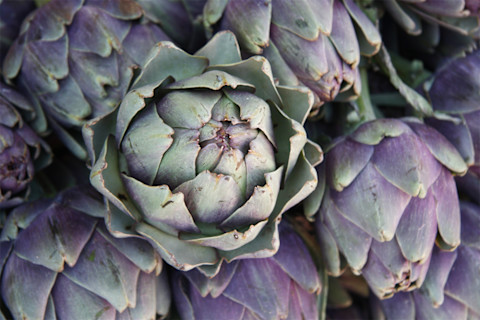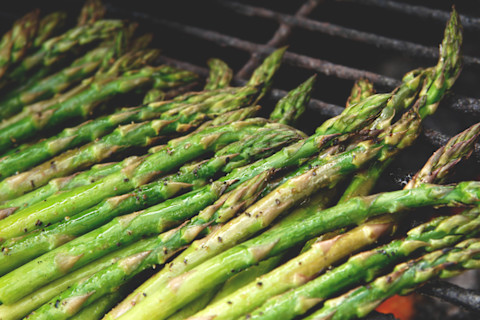An Autoimmune Disease Completely Changed The Way I Eat. Here’s The Food That’s Healing Me

I was reaching the end of my rope with the pain and achiness and exhaustion I’d been feeling for years. What had begun in college had expanded to a nearly constant ache during my years in New York. Along with the pain came chronic exhaustion and a low-grade fear that followed me everywhere. The fear said, If you feel like this in your 20s, how are you going to feel when you’re 38 or 52?
Being in a new city, I went to see a new doctor and she ran me through yet another battery of tests and sent me to yet another specialist. Only this one finally gave it a name.
Systemic lupus.
Part of me was terrified to hear "This is a chronic disease that can be fatal if you don’t manage it properly” directed at me. But part of me was relieved, too: the part whose fingers ached too much to hold a pen and whose knees throbbed in her ears when she walked down the block.
The doctor had made it clear how important "eating healthy" was to holding back the lupus. What he hadn’t made clear was how to do it, and like so many people who face a grave diagnosis and are told to "eat better," all I could picture was a grim life of denial.
As I write in my book Nourished: A Memoir of Food, Faith & Enduring Love, food went from something I didn’t think about to becoming a pivotal part of my life. I wouldn’t have chosen to have lupus. But I was grateful that; because of it, I would become open to a whole new way of eating.
Upon my diagnosis, salvation came in the form of two books that gave me hope. One was Janet Fletcher’s Fresh From the Farmers’ Market, and the other was a big book I’d found on a discount shelf by Sally Schneider with the unfortunate name of The Art of Low-Calorie Cooking.

In her introduction, Sally says, "Necessity set me on the path to find a way to cook and eat that would nurture my body as well as my soul and senses." In the dazed aftermath of the lupus diagnosis, those words hit me smack in the gut. Tears welled in my eyes. When I got to the sentence, "Most of the bleak ‘diet’ regimes address only the physical side of eating, ignoring the other hungers that good food satisfies: hungers for the connection it can forge to friends and nature, for its sensual beauty, its colors, aromas, flavors and textures; for the cultural and historical meaning it expresses; and, most important, for comfort and well-being," I did cry. It felt to me like Sally was promising that idyllic marriage of joy and nourishment that I’d witnessed in Greece and been pining for ever since.
Fletcher’s book became my bible for our Saturday farmers market runs. Before, it had never occurred to me to try vegetables I was unfamiliar with. Having Fletcher’s book—and a lupus diagnosis like a gun against my back—changed things.
While I was open to trying new things, what I stubbornly refused to do was bring new eyes to old things. Like, for instance, peas, which I’d always known as mushy, brown orbs from a can that my mom would try to sneak me as a child.
That is, until one Saturday morning in spring when a farmer held out a pea to me and changed my world. "Try these," he said. I made a face and waved away the offer, but he wouldn’t take no for an answer. The plump little orbs were almost bursting from the pod. "You have to. They’re so sweet and delicate this time of year."
As I grudgingly brought the pea to my lips, I found that the farmer’s pea was in no way related to the peas of my childhood. In fact, this pea tasted so fresh and bright that the word spring! pounced into my mind.
I bought a pound.

Soon after, my long-held prejudice against asparagus fell by the wayside when I experimented with charring them lightly on the grill. Beets were next, with Fletcher’s Roasted Beets with Fennel Oil. My whole way of looking at vegetables started to shift...all because of that one little pea.
Cookbooks had taken me on adventures. They’d taught me how to heal and broadened my horizon with veggies. But eventually I reached a place where I itched to stretch my own wings.
I have a memory from when I was about 7 years old. I was sitting beside my grandma, who was an artist, on a piano bench and had just played her a song that I’d written. Then I turned to her and said, "Grandma, teach me how to paint."
She paused and considered the request, then posed a question of her own. "How did you write that song, Lia?"
"It was just in my head," I answered, impatient to move on to painting. "And then I played around with it on the piano until it sounded like it did in my head."
A smile had grown on her face. "That’s exactly how I paint pictures."
I formed a theory about creativity that day. I believe that creativity is less about the final manifestation and more about an invisible current that flows within all of us. For me, that current had manifested first as music, then in my early 2-s as writing. Now I was discovering that cooking could be creative too.

Sautéed Zucchini With Onions and Thyme
Serves 4
This was my go‑to "healthy" dish when Julie and I lived together in Manhattan. Back then, I was terrified of fat. I would heat the veggies in a pan with no oil so I would feel virtuous. But then I discovered the effect caramelization has on veggies (and the effect olive oil has on our bodies) and re-engineered this dish to be not only virtuous but delicious. Serve this as a main course over quinoa or red rice, as a side dish, or any number of ways as a component...tossed with pasta, tucked into a taco, or folded into an omelet, for instance.
Ingredients:
- 3 tablespoons extra-virgin olive oil
- 1½ pounds zucchini (or other summer squash), cut into 1‑inch pieces
- 5 garlic cloves, thinly sliced
- 1 medium onion, chopped
- 3 thyme sprigs
- Sea salt and freshly ground black pepper
Method:
Heat a large sauté pan with steep sides over medium heat and add the olive oil. When the oil is hot, add the zucchini, garlic, onion, and thyme to the pan, and toss to coat with the oil. Sprinkle with salt and pepper and toss to coat again. Cover and cook for 15 minutes, stirring occasionally, until the zucchini begins to soften.
Remove the cover, turn the heat up to medium-high, and continue cooking for another 10 to 15 minutes, scraping the bottom of the pan and turning the zucchini over on itself, folding the caramelized bits in, until the zucchini is almost completely broken down. Remove the thyme sprigs and serve.
